© 2024 Tales from Outside the Classroom ● All Rights Reserved
How to Teach Fractions Greater than 1: Hands-on Lesson and Engaging Sorts
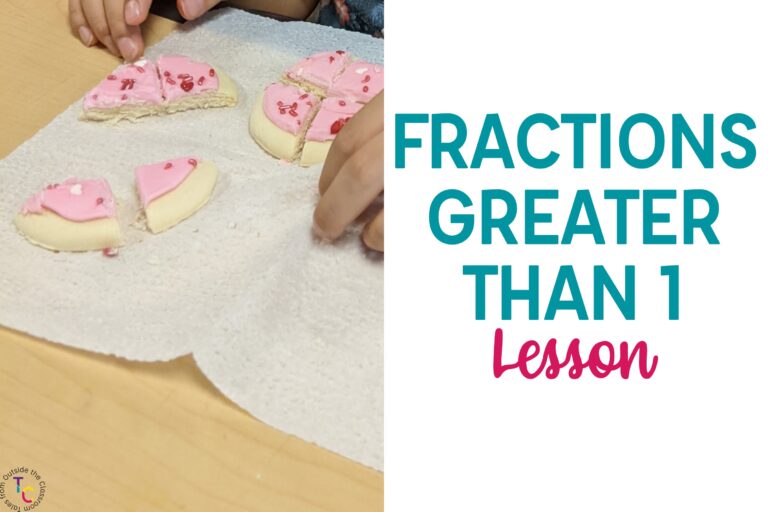
In order to effectively teach fractions greater than 1, students should have a strong understanding of fractional concepts like numerator, denominator, and fractions representing parts of a whole. I don’t teach fractions greater than one until I feel most of my 3rd grade students are feeling comfort with fractions of a shape and fractions on a number line. Significant work with fractional concepts lays the foundations students need to be successful with improper fractions. You can see how I introduce fractions in my Interactive Fractions Strips Lesson post.
Before I continue, I should explain that I do not use the term “improper fractions” frequently in my classroom. I read the post “Why You Shouldn’t Say Improper Fractions” several years back from The Recovering Traditionalist and it made so much sense to me! There is nothing “wrong” or improper when the fraction is greater than one. However, I know teachers in future years will likely use it, and our current curriculum uses it. So, I do use it from time to time alongside “fractions greater than one”. It’s important for students to have familiarity with the term improper fractions since I know it will come up for them in the future, but I don’t use it to describe fractions greater than 1 in most of my lessons.
Fractions Greater than 1 Models
The most effective way to build student understanding of fractions greater than one is by using hands-on models. I always prefer to use student created, or atypical, math manipulatives rather than commercial options. For fractions larger than one, or even traditional fractions, I LOVE to use cookies! Soft sugar cookies are easy for students to cut apart with a plastic knife. The kids are highly engaged because they’re working with cookies- and if you’re anything like me, you’ll let students eat the cookies after they’re done. I walk through my step by step lesson in the video below. Obviously, it takes a bit longer when doing it in the classroom as I give students time to make the cuts, and build in additional talking time with a partner to process their thinking. In all, the lesson takes us about 45 minutes.
Through this interactive, hands-on lesson students should understand that when the numerator and denominator are the same, the fraction is equivalent to one whole. They also should understand that when the numerator is larger than the denominator, the fractions is representing more than 1. This lesson reinforces both the concepts of the numerator and the denominator and you also can use the same lesson to talk about equivalent fractions and comparisons, depending on how much time you want to spend, and student readiness for it.
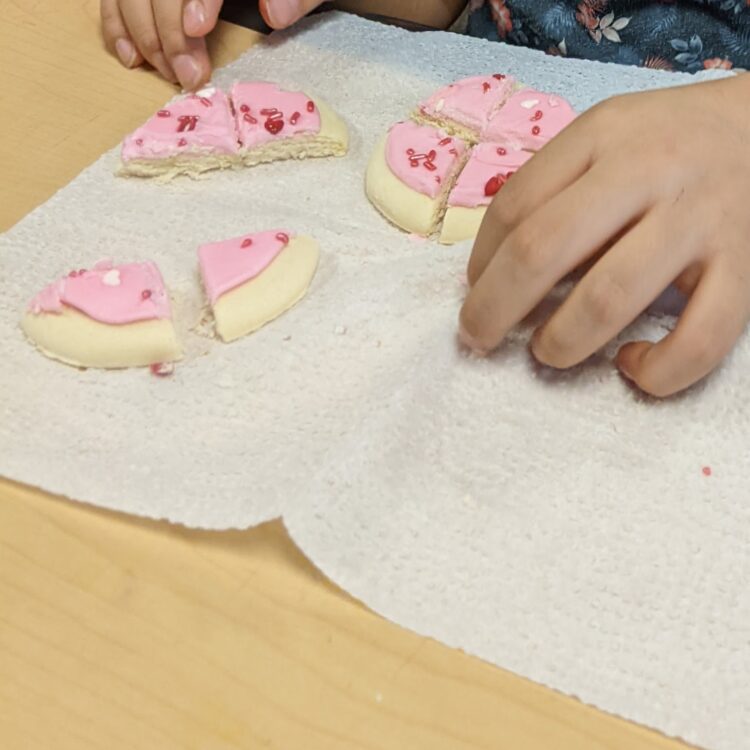
This same lesson can also be done with Play-Doh. I’ve even done the lesson a second time, with students in need of additional reinforcement, using Play-Doh and scissors. Because students can easily form and cut circles, it makes a great tool. I prefer to use cookies, however, since they are all the same size and are more perfectly rounded than student created Play-Doh circles.
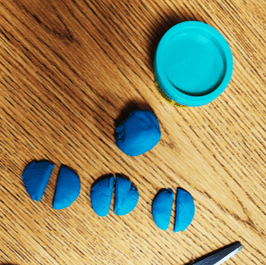
Fractions Greater than 1 on a Number Line
After working with fractions of a shape, our work moves on to fractions on a number line. For my students, this is the most challenging part of our 3rd grade fractions unit. Many of my students struggle with number sense and using number lines in general, so applying fractions with number lines is a challenge. Students should already have experience navigating fractions on a number line and partitioning lines to represent proper fractions before introducing fractions greater than one.
To begin with number lines, I connect our work with shapes. I do this to try and help my students that struggle to truly understand whole numbers and fraction relationships. I find if we begin with connecting the wholes on to the number line, and then partitioning both, it helps students see what the number line represents. I draw circles above the number line to represent that many number of shapes to match the whole numbers already displayed. I love to use the Number Line tool from Math Learning Center to help with this. Then, I partition the shapes and we talk about the fractions. Finally, I do the same with the number lines. Connecting to what students already know and understand with fractions and number lines is so important!
Frequently, my students struggle with denominators with fractions greater than one on a number line (often shapes as well). They really struggle to internalize that the denominator represents the number of fractions in each whole. I intentionally incorporate a TON of practice with number lines because I know my students will need it.
Interactive Sort
After my initial lessons with fractions greater than one, I like to continue to review the concepts we’ve learned. I use these task cards as a whole class sorting activity to review whole numbers as fractions and fractions greater than 1. Here’s how I do it:
- I place the signs for “Greater than 1”, “Equal to 1”, and “Less than 1” across the room.
- I hang up the visual model signs around the room.
- I give each student a fraction task card.
- Students begin by going to the area of the room that describes their fraction: less than 1, equal to 1, and greater than 1. This is the interactive sort part of the lesson.
After students are in place, I guide students to the correct area if needed and we discuss how we know based on a fraction’s numerator and denominator. This helps reinforce the generalizations we’ve been talking about. Then, students find their visual model match around the room. After again checking their work and guiding students that need support, we are ready to do another fraction.
I like to do a “snowball fight” with this. To do it, students gently crumble their piece of paper. When I say “go”, students start finding and tossing the “snowballs” until my chime goes off. Then, they immediately pick one up and go to the area of the room that describes their fraction.
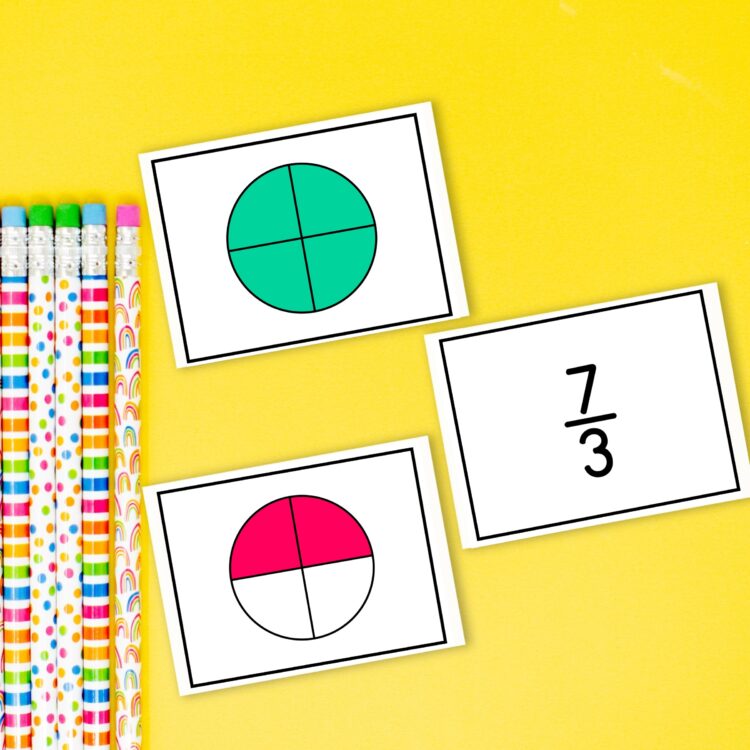
Other Task Card Ideas
- Mix the fractions and visual models so that students have to think through both components of fractions. You would have to be intentional as you choose which cards to display you pass out the matches to what you have displayed.
- Give all of the cards to students and have them find their partners. This could be done before or after they identify their fraction as greater than, less than, or equal to 1.
- Do the same activities but instead of matching with the fraction, the match is the number line model.
This MASSIVE freebie has 104 pages! With 392 task cards, you can use these throughout your fractions unit! Task cards are included for fractions less than 1, equal to 1, greater than 1, and whole numbers as fractions. You can use them to sort and match visual shape models or number line models with fractions. You can use them to help students practice equivalent fractions or comparing fractions. Because they’re task cards, there are so many engaging ways you can use them in the classroom! In addition to the “snowball fight” activity above, you can use these to do “Solve the Room” or “Musical Math” activities.
Sign up with the form below and this will be sent to your straight away- along with ideas for how to use them within your fractions unit. I compiled these task cards with 3rd grade students in mind, but they certainly could be used with other grade levels strategically.
Newsletter
Sign up to receive your free Fraction Models Task Cards! After confirming your email, you’ll receive the file and be signed up for my weekly newsletter.
Thank you!
You have successfully joined our subscriber list.
Looking for other resources for your fractions unit? Check out my Must Have 3rd Grade Fractions Activities post for more!
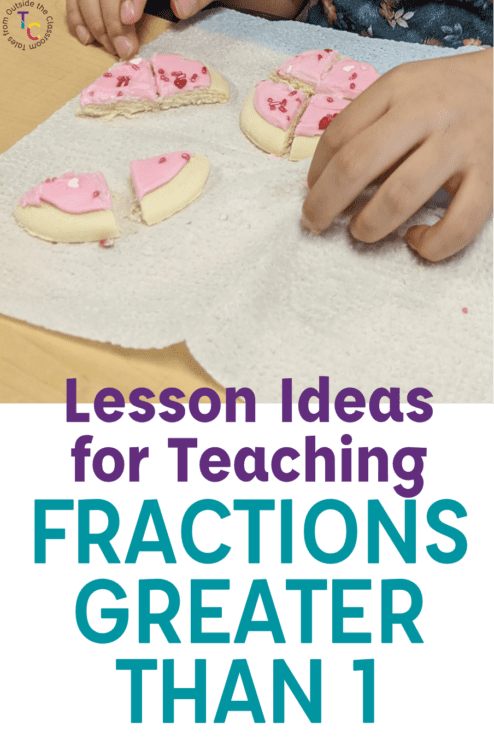
Newsletter Sign Up
Signup for my weekly-ish newsletter. I send out exclusive freebies, tips and strategies for your classroom, and more!
Please Read!
You have successfully joined our subscriber list. Please look in your e-mail and spam folder for Tales from Outside the Classroom. Often, the confirmation email gets overlooked and you're night signed up until you confirm!

Hi! I’m Tessa!
I’ve spent the last 15 years teaching in 1st, 2nd, and 3rd grades, and working beside elementary classrooms as an instructional coach and resource support. I’m passionate about math, literacy, and finding ways to make teachers’ days easier. I share from my experiences both in and out of the elementary classroom. Read more About Me.









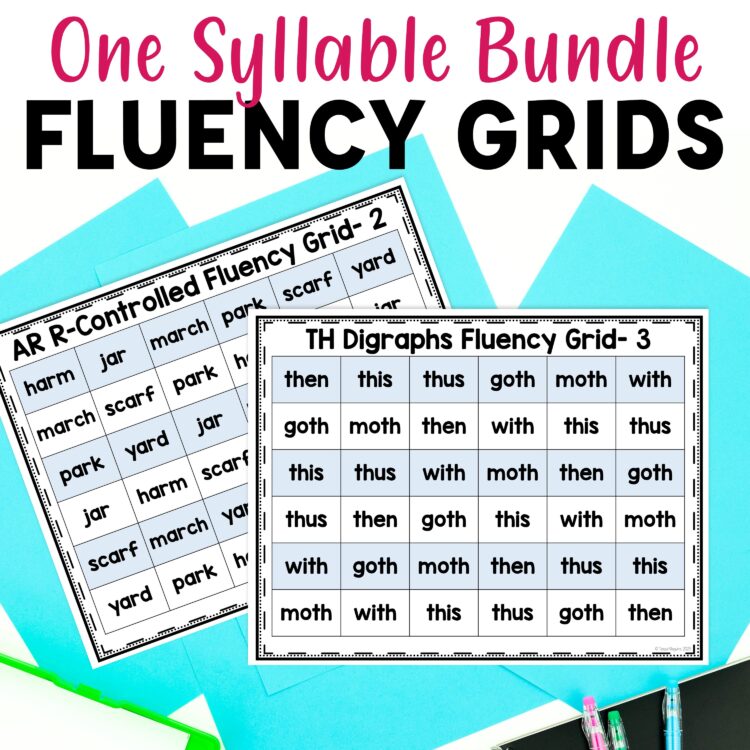
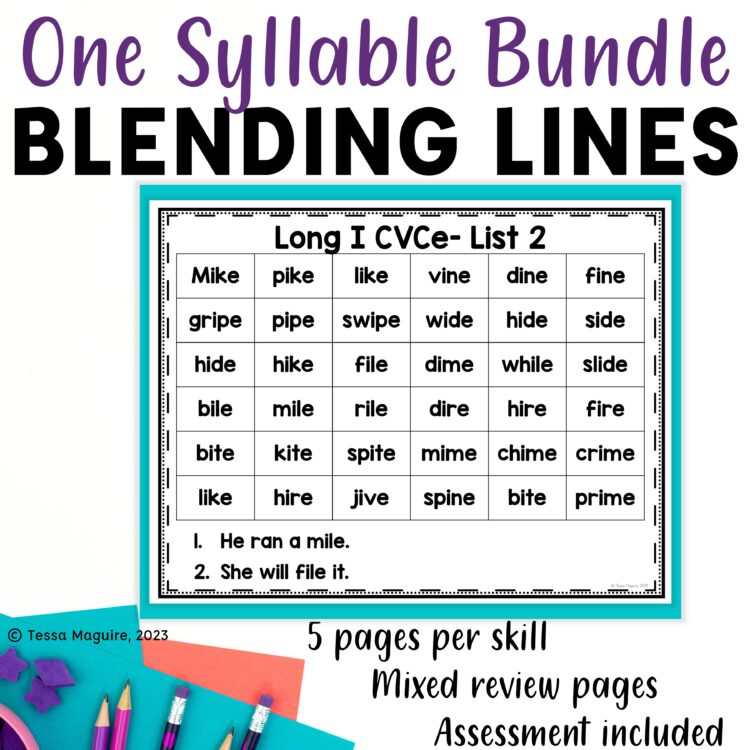
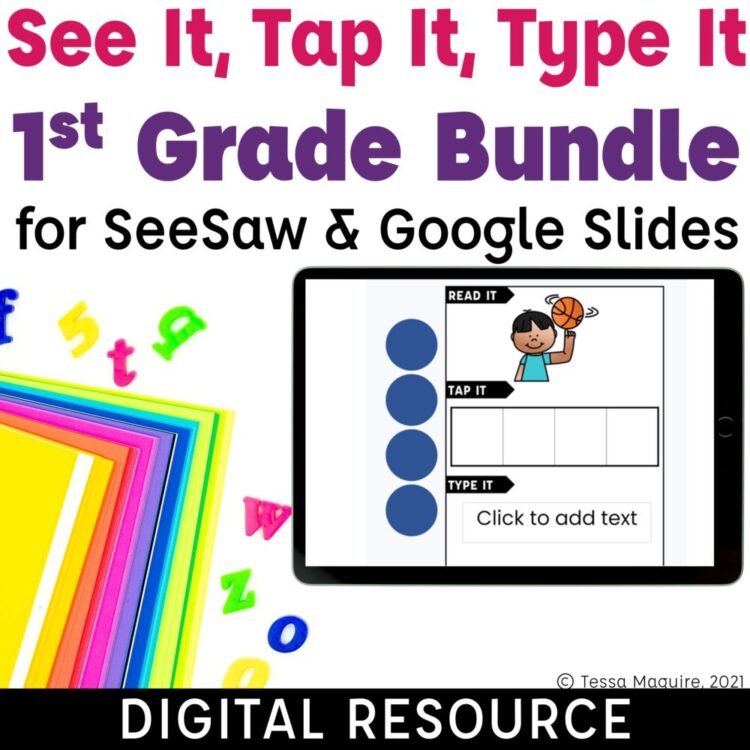



One Comment
Great interactive ideas!